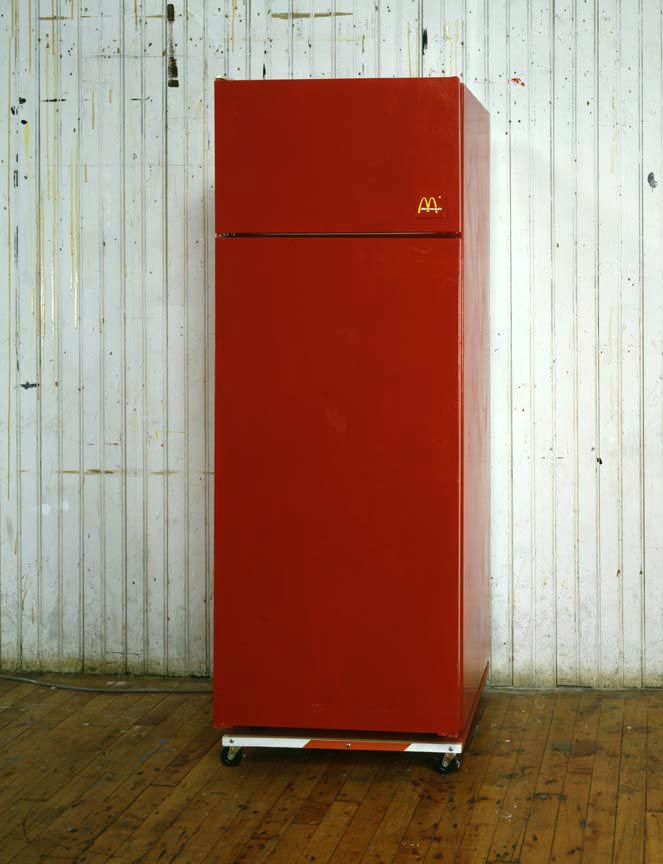LOGJAM
May 24, 2007 - August 26, 2007
One may not often consider a drill press or an office desk a work of art, but in the Des Moines Art Center's newest exhibition, Tom Sachs: Logjam, on view May 25 - August 26, 2007, artist Tom Sachs' work stations not only enable him to create art, but are works of art in their own right. In the truest sense of form following function, Sachs' fascinating and often obsessive work stations allow the viewer to peer into the rarely seen spaces in which this artist works. Tom Sachs: Logjam, the artist's first one-person museum exhibition in the United States, is organized by Jeff Fleming, director of the Des Moines Art Center. The exhibition will travel to the Rose Art Museum of Brandeis University in Waltham, Massachusetts, in the fall of 2007.
Tom Sachs is known for his effusive installations and constructions of a variety of objects more commonly found within the public or commercial domain. "Each piece speaks to Sachs' creative process and to the act of art making," explains Fleming. "These private works tell of obsession and labor, but add to these attributes a sense of playfulness and exuberance that infuse each of his objects."
Logjam augments the prevailing discussion of Sachs' critique of consumer culture by highlighting two bodies of work that focus on the actual making of art objects. His highly significant "work" stations and what could be described as his "living" stations clearly exemplify the artist's sense of play. While Sachs freely admits his art actively participates in consumer culture, his overriding interest actually lies in the process of making objects. Examples of his "work" stations include a wall-mounted cabinet with spaces for tools and materials; a tall, wooden wardrobe filled with drills, saws, and tape dispensers; a hand held repair kit with compartments for glue and tape; a drill press; and his Million Dollar Desk (2005-06) that doubles as a table saw. These "work" stations are the objects the artist uses every day to create his more public pieces.
Arguably Sachs' most personal exhibition to date, Logjam explores why he is driven to fabricate objects and how he chooses to make what he does. His "living" stations function to support day-to-day activities and include a working refrigerator complete with beer; and a functioning toilet and sink-with a toilet-paper dispenser included. For Sachs, survival day by day is the first, basic level of existence; thriving, sometimes playing, is the ultimate objective. Occasionally the components of survival become works of art, but most often art happens during the second level of activity. Sachs positions the handmade and evidence of the hand as paramount in his work.
<
>





